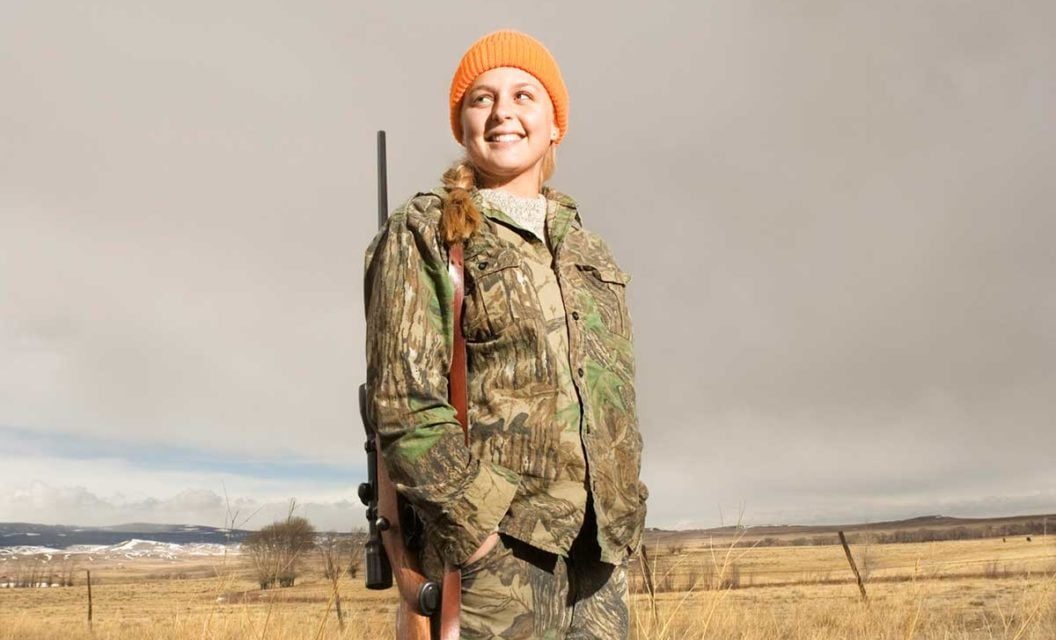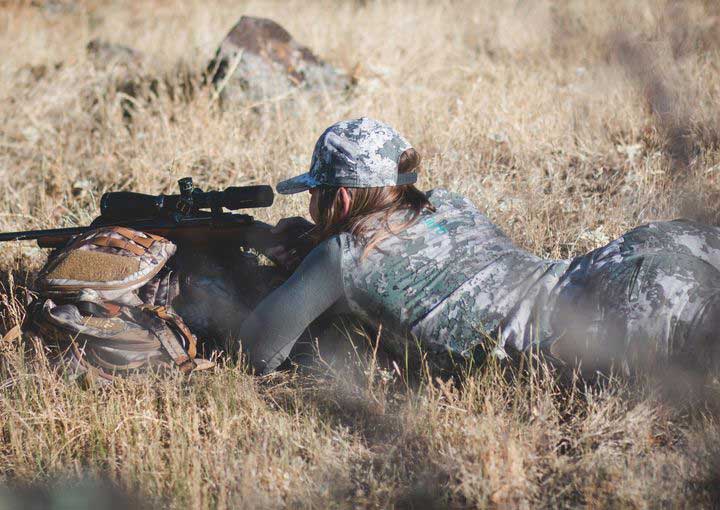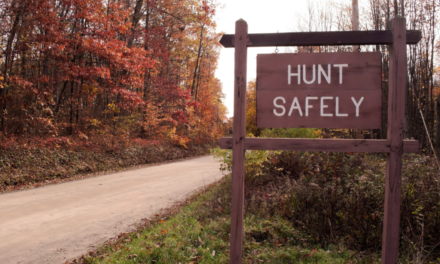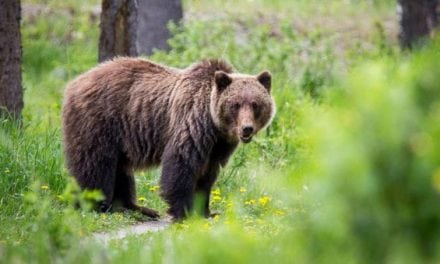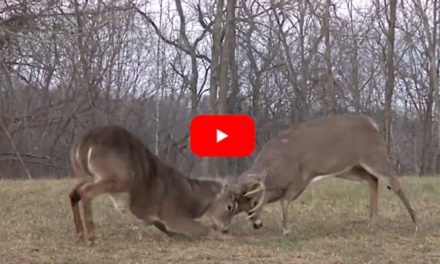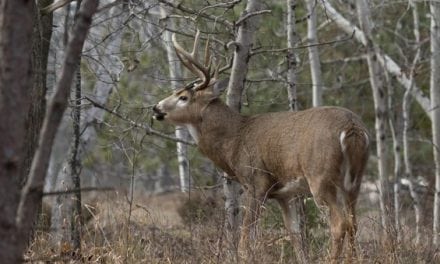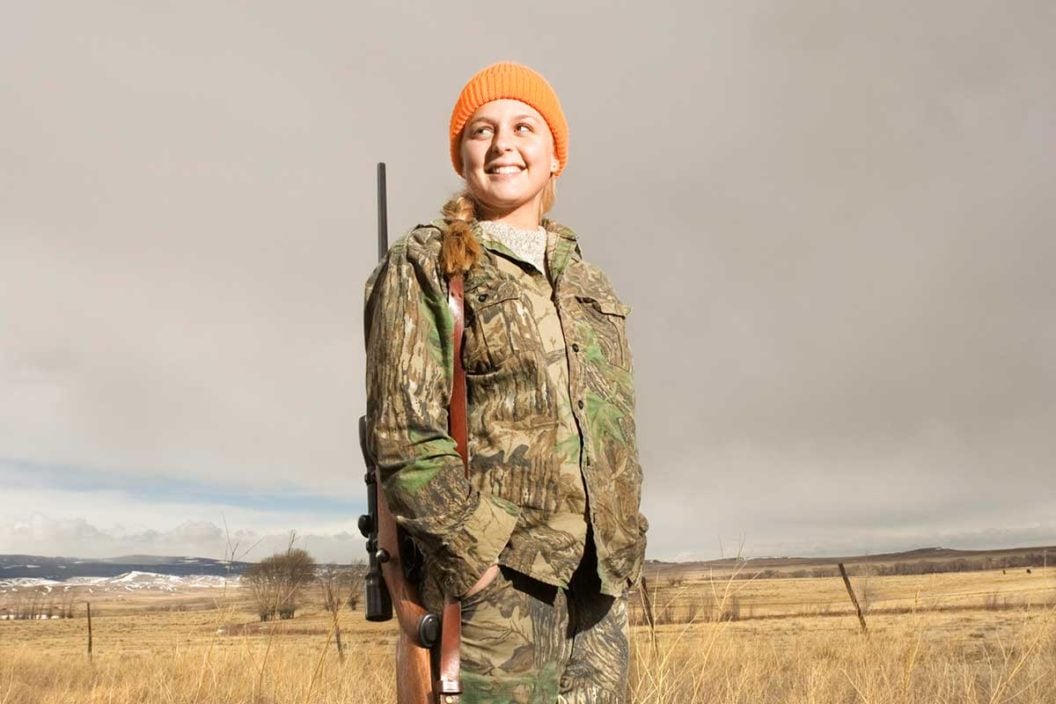
Getting into hunting can be daunting. When I started hunting four years ago, I remember being utterly overwhelmed. Not only did I need to learn a ton of information about how to field butcher big game, best practices for taking care of my wild game meat, and how to cook wild game, but I also realized I needed a ton of gear, including a gun. Buying a first hunting rifle for women can be a bit overwhelming. Thankfully, I was already into backpacking, hiking, and bird watching. I already owned a 65-liter backpack, decent binoculars, hiking boots, and breathable layers of clothing. To fill out the rest of my hunting gear, all I needed was camouflage and a rifle.
Before I left Wisconsin for Colorado in the summer of 2018, my brother gifted me his .22 long rifle. That fall, I used my shiny new hunter’s safety certification and that small caliber gun to chase small game all over Gunnison County. However, after tagging along on an elk hunt and borrowing a friend’s rifle to hunt a mule deer doe, I decided I needed a larger caliber rifle of my own. Ultimately, I ended up buying a Savage Arms bolt action .270 online. It was lightweight, available for left-handed shooters, and priced affordably. Plus, that caliber was appropriately-sized for the game I wanted to chase: deer, elk, and bear. I tacked on a sling and a scope and before I knew it, I had a functional hunting rifle setup for under $1,000 that I loved to shoot.
Buying your first rifle doesn’t have to be intimidating for women. Once you identify what type of firearm you require to meet your hunting needs, it all gets easier from there. There are just a few things to consider prior to swiping your credit card on a new gun.
What is a hunting rifle, exactly?
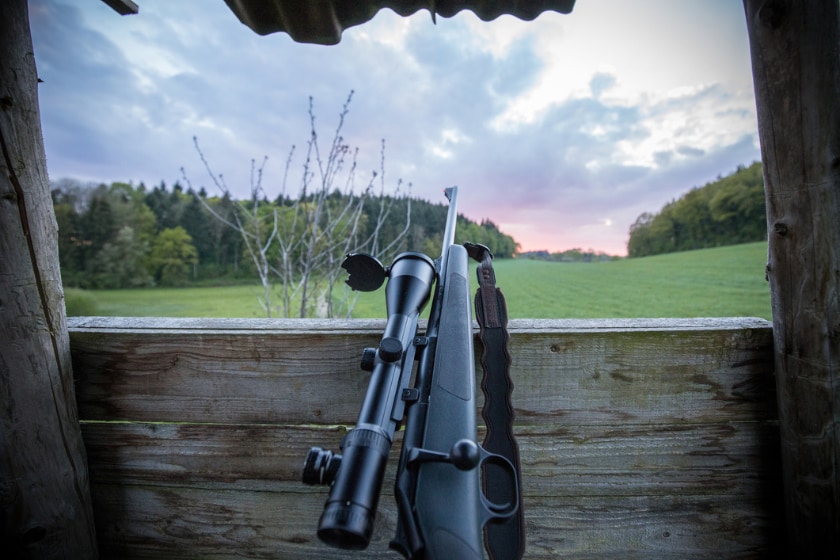 A rifle is a long gun, typically shot from the shoulder, that has a rifled barrel. Rifling consists of spiral grooves on the inside of a gun’s barrel–the straight metal shooting tube that makes up most of the length of the gun. Rifling is done during manufacturing and this feature causes the bullet to rotate while it is traveling down the barrel. Rapidly spinning bullets not only travel long distances but also make the flight path more stable, increasing accuracy. Different bullet sizes require different rifle caliber rifles. For hunting purposes, common calibers range from .17 hundredths of an inch up to .300 thousandths of an inch.
A rifle is a long gun, typically shot from the shoulder, that has a rifled barrel. Rifling consists of spiral grooves on the inside of a gun’s barrel–the straight metal shooting tube that makes up most of the length of the gun. Rifling is done during manufacturing and this feature causes the bullet to rotate while it is traveling down the barrel. Rapidly spinning bullets not only travel long distances but also make the flight path more stable, increasing accuracy. Different bullet sizes require different rifle caliber rifles. For hunting purposes, common calibers range from .17 hundredths of an inch up to .300 thousandths of an inch.
What type of caliber do you want to shoot?
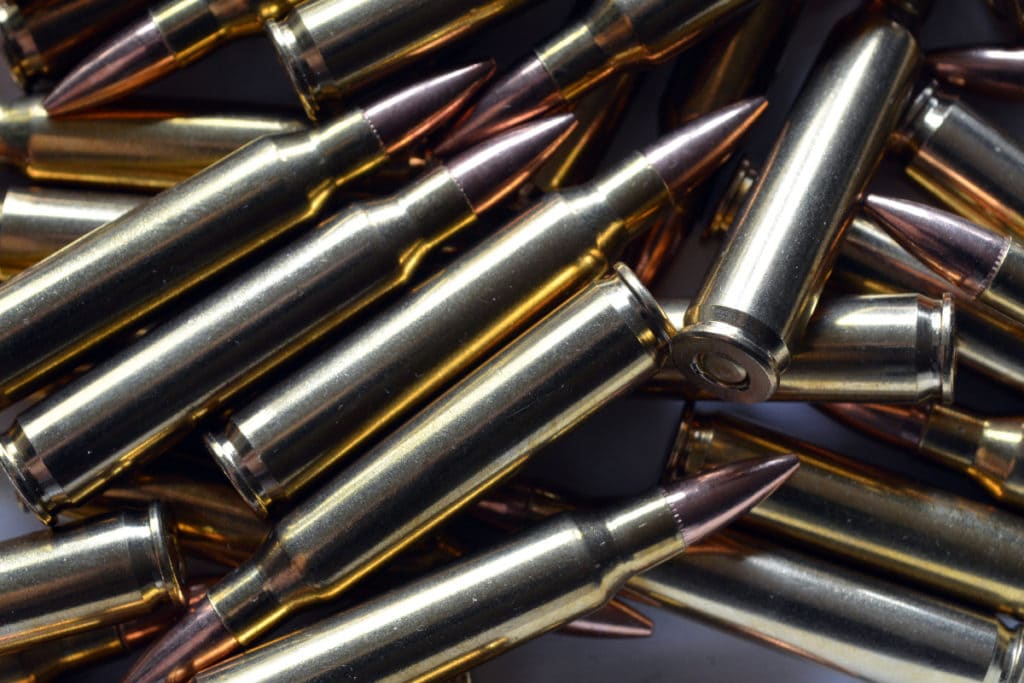 Depending on what type of hunting you’re looking to do, you’ll want to select a caliber that’s appropriate for that quarry. If you’re planning on hunting small game like rabbits or squirrels, consider looking into .17s or .22s. Rifles that are .17s shoot the smallest projectile at the highest velocity, making them excellent for small, faraway targets. Twenty-twos are quite similar, but the projectile is a bit larger and it travels less distance with less velocity than a .17. These small calibers are fantastic entry-level options, can be really affordable, come in a range of barrel lengths and stock sizes, and have basically no recoil.
Depending on what type of hunting you’re looking to do, you’ll want to select a caliber that’s appropriate for that quarry. If you’re planning on hunting small game like rabbits or squirrels, consider looking into .17s or .22s. Rifles that are .17s shoot the smallest projectile at the highest velocity, making them excellent for small, faraway targets. Twenty-twos are quite similar, but the projectile is a bit larger and it travels less distance with less velocity than a .17. These small calibers are fantastic entry-level options, can be really affordable, come in a range of barrel lengths and stock sizes, and have basically no recoil.
If you’re planning on hunting big game like elk, deer, pronghorn, or bear, consider an intermediate caliber. Personally, I use my .270 for these applications. Generally speaking, most big game hunters don’t shoot a caliber smaller than that at big game. Additionally, most states have a minimum caliber size when it comes to big game hunting. Ideally, anything from a .270 to a .300 will get the job done in these situations.
If you’re planning on going after moose, I’d recommend a .300. You’d likely be able to lethally shoot one with a smaller caliber, but when it comes to shooting this huge animal quickly, ethically, and with as little meat damage as possible, you’ll want a caliber that really packs a punch.
What action type do I want to use?
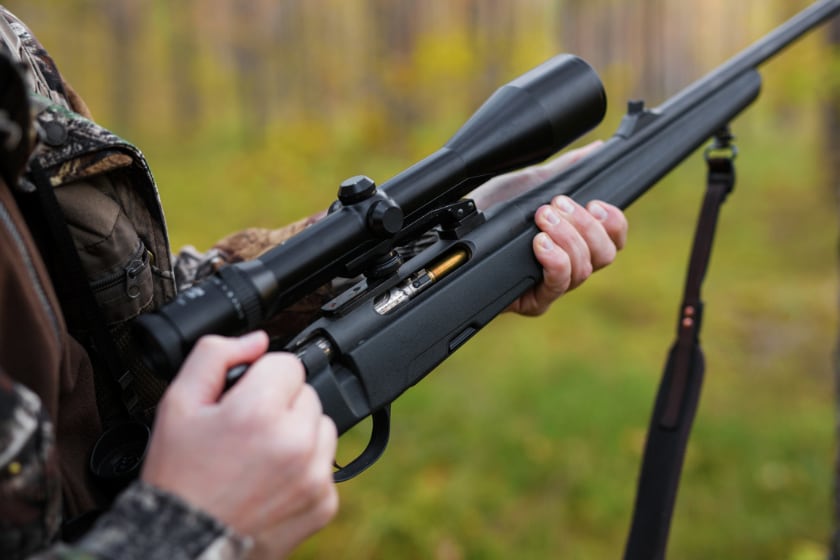 Rifles come in four main action types: break, lever, bolt, and semiautomatic. Break actions typically fire a single shot that you need to manually reload each time. They’re more common in small calibers like .17s and .22s. Lever actions look cool and are classically American, but they are limiting. Lever action ammunition choices are restricted to rounds designed to load in a tubular magazine; these guns also shoot less distance with less velocity. Bolt actions are the most common rifle action in a hunting gun. You can get nearly any caliber rifle with a bolt action, and the same goes with semiautomatic. Semi-autos reload ammunition after each shot, saving you time when it comes to sending bullets down range.
Rifles come in four main action types: break, lever, bolt, and semiautomatic. Break actions typically fire a single shot that you need to manually reload each time. They’re more common in small calibers like .17s and .22s. Lever actions look cool and are classically American, but they are limiting. Lever action ammunition choices are restricted to rounds designed to load in a tubular magazine; these guns also shoot less distance with less velocity. Bolt actions are the most common rifle action in a hunting gun. You can get nearly any caliber rifle with a bolt action, and the same goes with semiautomatic. Semi-autos reload ammunition after each shot, saving you time when it comes to sending bullets down range.
What barrel length do I need?
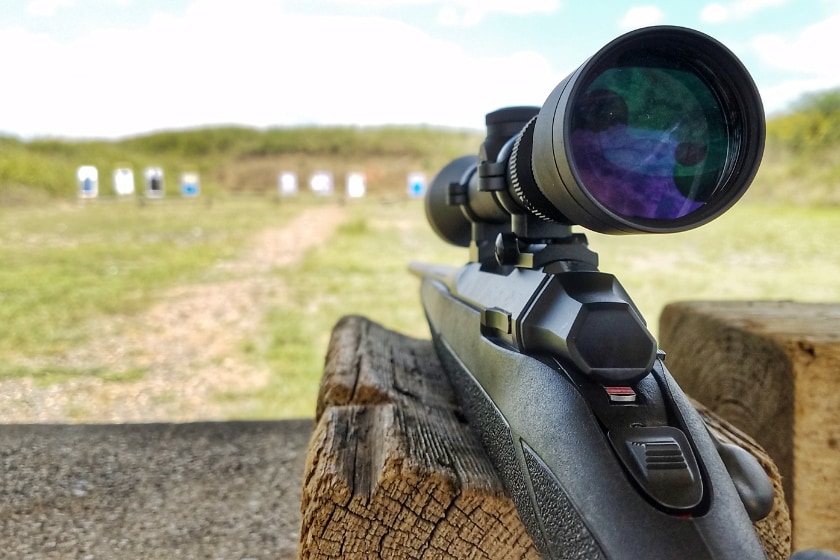 Finding the happy medium between maneuverability, fit, and velocity are the main considerations to think about when looking at barrel length. Legally, a rifle can’t be shorter than 16 inches. Longer barrel lengths have increased velocity; this increases your range. For smaller calibers, length in the 16- to 18-inch range is great. When considering larger game, look into 18- to 24-inch barrels. However, if you’re not hunting in the tundra or wide open plains, the 18- to 20-inch range will be more maneuverable through brush, trees, and dense vegetation.
Finding the happy medium between maneuverability, fit, and velocity are the main considerations to think about when looking at barrel length. Legally, a rifle can’t be shorter than 16 inches. Longer barrel lengths have increased velocity; this increases your range. For smaller calibers, length in the 16- to 18-inch range is great. When considering larger game, look into 18- to 24-inch barrels. However, if you’re not hunting in the tundra or wide open plains, the 18- to 20-inch range will be more maneuverable through brush, trees, and dense vegetation.
What should my rifle’s composition be?
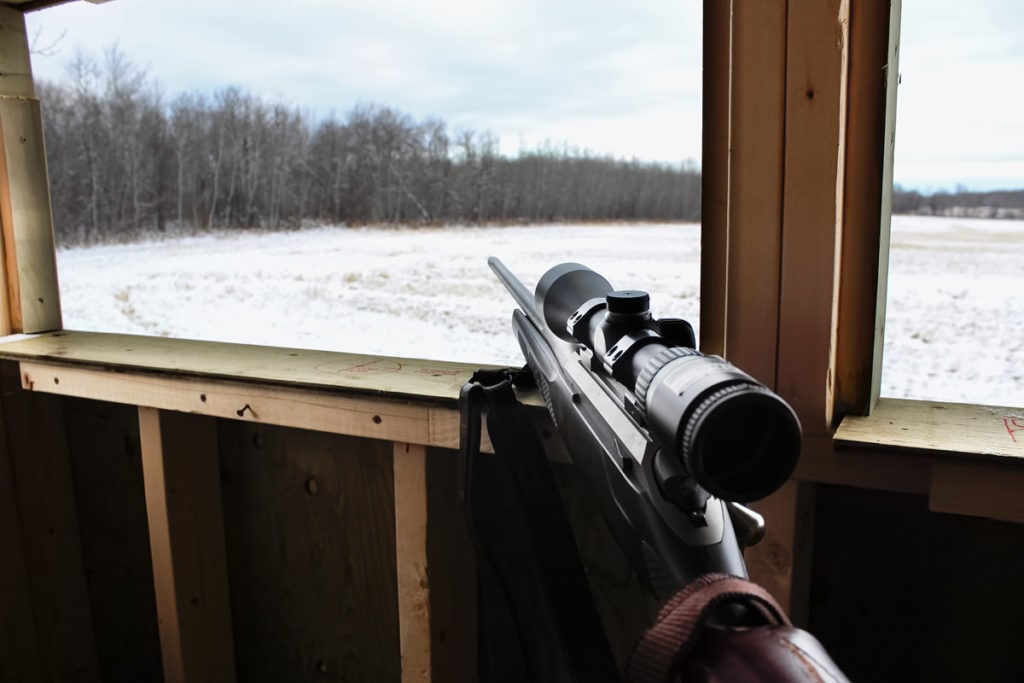 The material that rifle stocks and barrels are made out of can influence the weight, maneuverability, and style of the rifle. Stocks are generally made out of wood or a plastic polymer composite. Wooden stocks are classic, visually attractive, and heavy. Their additional weight can help you shoot steadily and decrease recoil. The wood is also laminated, helping it maintain weather resistance and avoid damage. Wood is more prone to warping in humid environments, though. Composite stocks are generally more affordable, lighter, and available in a wide range of colors including camouflage. They’re highly durable and weather resistant, too.
The material that rifle stocks and barrels are made out of can influence the weight, maneuverability, and style of the rifle. Stocks are generally made out of wood or a plastic polymer composite. Wooden stocks are classic, visually attractive, and heavy. Their additional weight can help you shoot steadily and decrease recoil. The wood is also laminated, helping it maintain weather resistance and avoid damage. Wood is more prone to warping in humid environments, though. Composite stocks are generally more affordable, lighter, and available in a wide range of colors including camouflage. They’re highly durable and weather resistant, too.
Rifle barrels are either blued or stainless steel. Blueing is cheaper; it’s a more historical method of corrosion resistance. If you live in a humid environment, expect to get wet while hunting, or don’t plan on cleaning your firearm after every snowy hunting trip, stainless steel might be better for you because stainless is highly resistant to corrosion.
Pick a rifle that feels good to you.
It’s important to find a rifle with the barrel length, stock material, action type, and length of pull that fits your body and hunting applications best. Length of pull is the distance between the trigger and the end of the butt stock; you want this distance to feel comfortable, too.
For example, if you have arthritis or are disabled, consider a semiautomatic action as opposed to a bolt action. If you’re five foot ten and enjoy weightlifting, a 24-inch barrel and a wooden stock may not be dealbreakers for you. If you have a smaller frame, don’t discount the option of a youth stock or gun because it may well be the best fit for you. My 20-gauge shotgun is a youth model and it fits me like a glove).
If you can, go into a gun shop and try holding several different types of rifles to get a feel for them. It’s easy to just buy a gun on the internet and get it shipped to an FFL near you, but if you can at least physically hold a few rifles prior to your purchase, you may be able to narrow down what you want just based on feel. For example, Erin Crider of Uncharted Outdoorswomen was between two pistols when she was recently looking to purchasing one. She was between the Sig Sauer P320 and the Springfield Armory Hellcat. She went to a gun shop that had both firearms available and ended up selecting the Hellcat simply because it fit her hands better.
Do I want any rifle attachments?
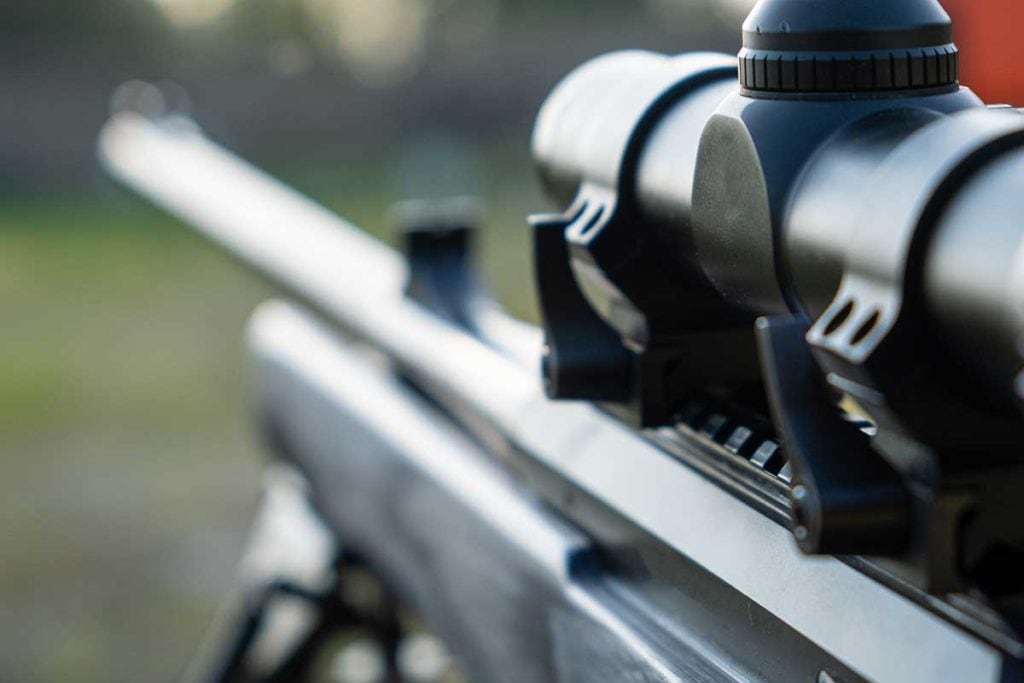
Denis Medvedev/Getty
When purchasing your first hunting rifle, it’s easy to go down a gear rabbit hole when it comes to accessories and equipment you can add to it. Scopes are the most common rifle attachment. I utilize a fixed scope on my .22 and a 10×44 scope on my .270. In addition to scopes, you can look into sling straps to make lugging your rifle around easier, too. I have one on my .270 since I usually hike long distances with it. Attaching a bipod to your rifle is also an option, but I personally prefer using a tripod-style shooting stick for steadying my rifle.
Getting into hunting with a rifle is challenging yet empowering. Having the ability to harvest your own meat, spend more time outdoors, and observe wildlife in its natural habitat is extremely rewarding. It’ll be that much better when you have a rifle of your own that fits your body and hunting style, too.
READ MORE: 5 Classic Deer Rifles That Have Lasted Since Our Grandpas First Used Them
The post 6 Things Women Should Consider Before Purchasing Their First Hunting Rifle appeared first on Wide Open Spaces.

